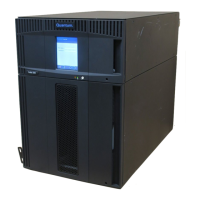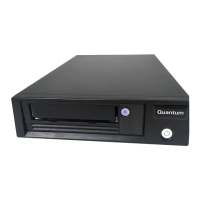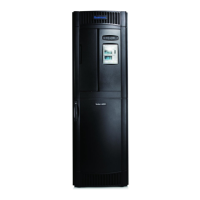4 Installation
DXi6700, DXi6701, and DXi6702 Site Planning Guide
Network Configuration During network configuration, each individual interface on the DXi6700 can be
configured as a subnet with its own network settings. Each physical Ethernet port can
be configured as an interface. In addition, you can also create bonded interfaces (logical
ports) consisting of two or more physical ports.
You can specify the type of traffic allowed on each interface (management, replication,
or data). Alternately, you can allow any traffic type on an interface. In this case, the
routing of different traffic types, as well as firewall capability, must be controlled using
the network infrastructure (routers and switches) that the DXi6700 is connected to.
Note: Each configured network interface requires its own set of network settings (IP
address, network mask, and gateway).
Caution: For effective bonded network use, a properly configured network switch is
required. (A network switch is not supplied with the DXi6700.) The
DXi6700 bonding settings must match the switch settings. If the switch
settings and the DXi6700 settings do not match, your system may become
inaccessible through the switch.
Firewall Ports The following firewall ports must be opened for correct function of the DXi6700.
TCP Ports Opened for Management Traffic
•22 (SSH)
•80 (HTTP)
•161 (SNMP)
•162 (SNMP, trap)
•443 (HTTPS)
• 1311 (Dell OpenManage)
• 8406 (HTTP, jettyd)
• 8407 (HTTP, thriftd)
TCP Ports Opened for DXi Replication Traffic
• 22 (DXi Replication)
• 80 (DXi Replication, OST)
• 1062 (DXi Replication, OST)
UDP Ports Opened for Data Traffic
• 111 (RPC, portmap)
• 628 (NFS, statd)

